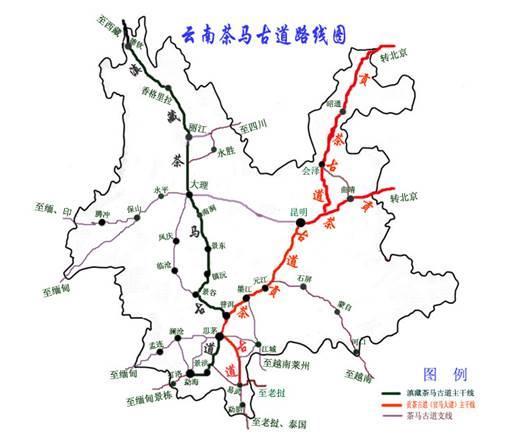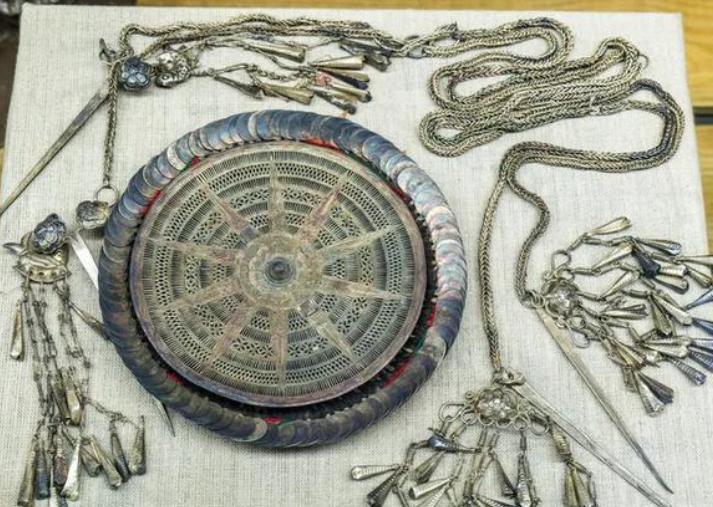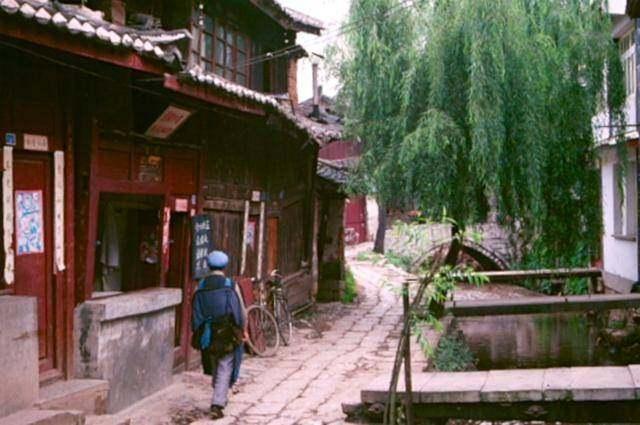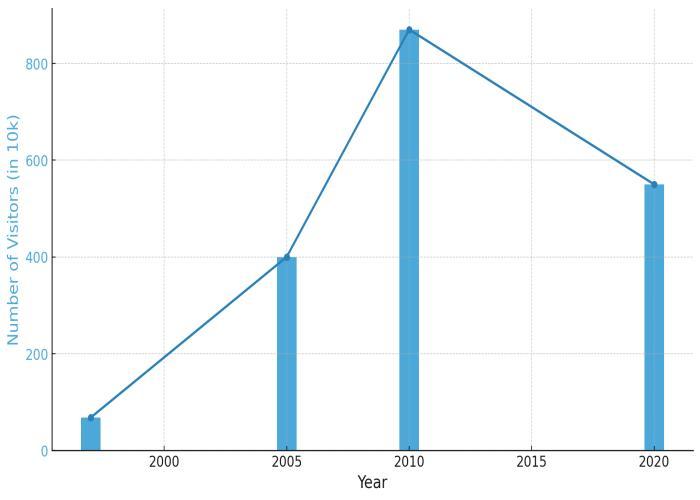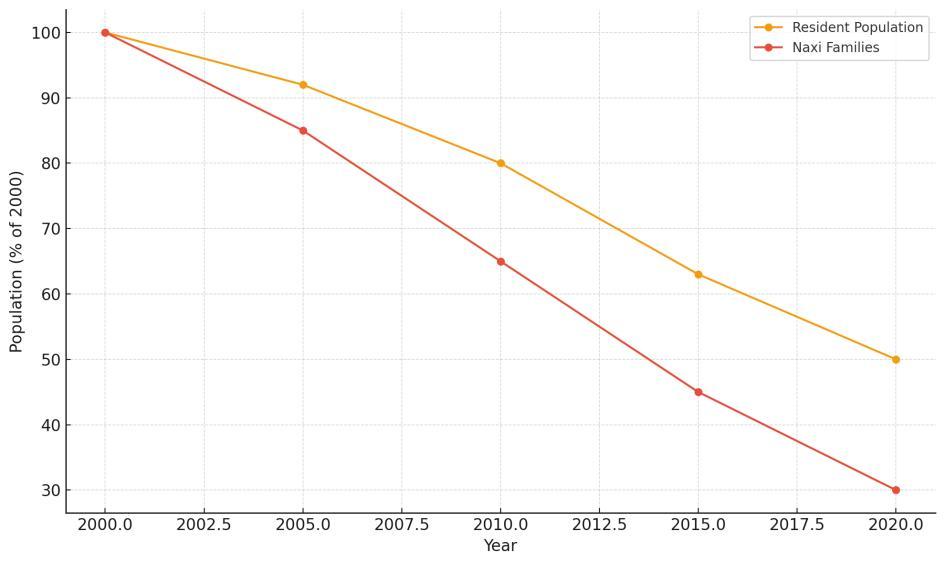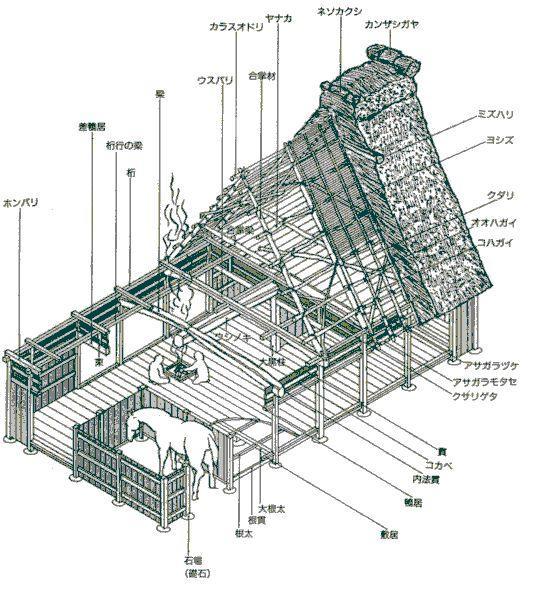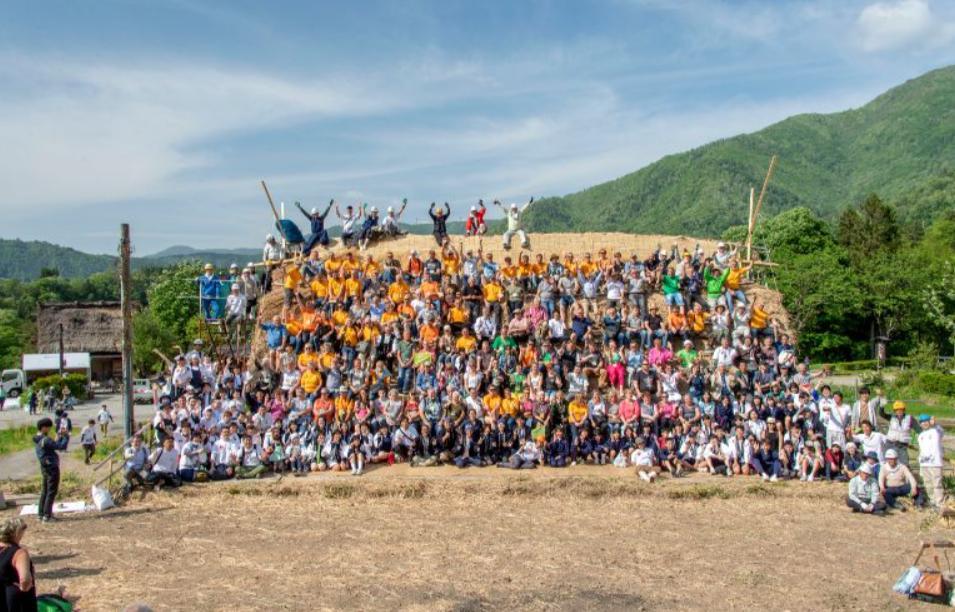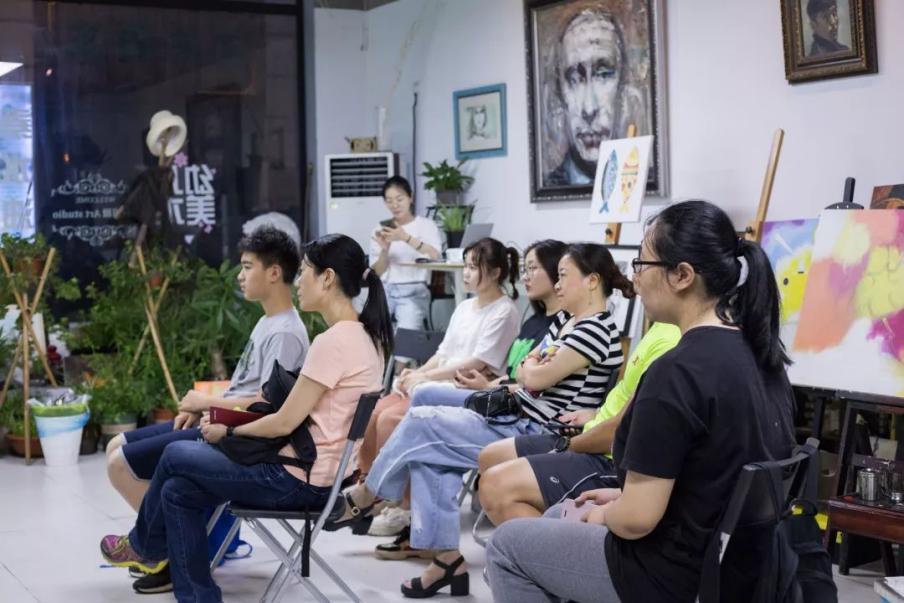Chapter1.Introduction
1.1ResearchBackground
WhenIfirstcametotheoldtownofLijiang,IwasshockedandconfusedbywhatI saw.Thebuildingsalongthestreetstillretaintheoutlineoftheoldcity,butmany arenolongerintheiroriginalshape.Alargenumberoftraditionalhouseshave beentransformedintoshops,innsandbars,andtheoriginalexquisitecarvedwood doorsandWindowshavebeenreplacedbymodernglassdoors.Manyancient buildingshavebeenover-transformedtomeettheneedsoftourists,andeven sufferedseriousstructuraldamageWalkingthroughtheflagstones,Isawthat manystreetsthatoncecarriedhistoricalmemorieshavebeenfilledwith commercialadvertisements,neonlightsandInternetcelebrityshops,andthe indigenouspeoplehavegraduallylost,andtheancientcityhasbecomemoreand morelikeacommercial"scenicspot"thanarealculturalcommunity
Suchascenemademedeeplyreflect:howonearthshouldChina'sancientcities findabalancebetweencommercializationandculturalprotection?Inrecentyears, withtherapiddevelopmentofdomestictourism,manyhistoricalandculturalcities areundergoingsimilarchanges.FromGulangyuIslandtoFenghuangAncientCity, fromPingyaotoDali,thewaveofcommercializationhassweptthecountry, traditionalneighborhoodshavebeentransformedintotouristconsumptionareas,
andculturalheritagehasbecometheobjectofcapitaloperation.1Local governmentsoftenseetourismasanopeningforeconomicgrowth,relyingonthe ticketeconomyandcommercialdevelopmenttogeneraterevenue.However, short-termeconomicprosperityisoftenaccompaniedbylong-termcultural damage,andcitiesthatrelytoomuchontourismrevenuecaneventuallylosetheir historicalvalueandbecomefeaturelesscommercialattractions.
GrowingupinJiangsu,Iamnostrangertoancientcities.Fromthegardensof SuzhoutotheoldCityofNanjing,manyhistoricalpropertiesareexperiencing similardifficulties-thenumberoftouristshassurged,traditionalbusinessmodels havebeenreplacedbyfast-movingconsumergoods,historicalbuildingsarefacing structuraldamage,andtheoriginalresidentsareconstantlylosing,eventually leadingtothehollowingoutoftheancientcityandthebreakingofthecultural vein
AsoneofthemostfamousancientcitiesinChina,Lijiang'sriseandfallisnotonly relatedtoitself,butalsotheepitomeofChina'sancientcitytourismdevelopment. Itshowedthenationtheopportunitiesbroughtbycommercialization,butalso exposedthedestructionofculturalheritagecausedbyover-development.Studying Lijiang'sexperienceandlessonscannotonlyhelptheancientcityfinda sustainabledevelopmentpath,butalsoprovidelessonsforotherhistoricalsites
1Ryan,C,&Gu,H(Eds)(2009)TourisminChina:Destination,culturesandcommunities
acrossthecountry.InthecontextoftherapiddevelopmentoftourisminChina, howtostrikeabalancebetweeneconomicbenefitsandculturalprotectionwillbe animportantissuethatallhistoricalancientcitiesmustface.
1.2ResearchScopeandQuestions
Thispaperexplorestheimpactofcommercializationontheculturalheritage conservationofLijiangOldTown,aUNESCOWorldHeritagesite.While commercializationhassignificantlyenhancedthetown’seconomicvalueand globalrecognition,excessivedevelopmenthasledtoculturalhomogenization, displacementoflocalresidents,andthestructuraltransformationofhistorical buildings.(Zhang,2023)2
Focusingontheperiodfromthe1980stothepresentparticularlyafterLijiang’s UNESCOinscriptionin1997thispaperinvestigatesthekeyforcesbehindits rapidcommercializationLookingahead,itconsidersthepotentialdevelopment scenariosforthenext10–20years,emphasizingtheroleofcommunity participationandculturalrevitalizationinachievingsustainableheritage management.Byanalyzingdomesticandinternationalheritageconservationcases, thispaperseekstoidentifystrategiesthatbalanceeconomicbenefitswithcultural andarchitecturalpreservation.
2Zhang,Y,&Smith,M(2023)TheconsequencesofcommercializationinhistoricaltownsJournalofTravel Research,62(3),456–472https://doiorg/101177/00472875231200494
therapidexpansionoftourismhasalsobroughtforthaseriesofculturalheritage andspatialgovernancechallenges,includingculturalhomogenization, displacementoflocalresidents,thefunctionaltransformationofhistorical buildings,andtheperformativestagingoflocaltraditions.Therefore,thispaper focusesonthedevelopmenttrajectoryoftheOldTownofLijiangfromthe1980sto thepresent,especiallytherapidcommercializationstageithasexperiencedafter beinglistedasaWorldCulturalHeritageSite.Itsystematicallyinvestigatesthe drivingforcesbehindthistransformation,suchaspolicyorientation,market mechanisms,andcapitalinvestment,andassessesthedeeperimpactsoncultural authenticityandcommunitylife
Buildinguponthisunderstanding,thepaperalsolookstowardthefuture, projectingthreepotentialdevelopmentalscenariosforLijiangoverthenext10to 20years:(1)continuedover-commercialization,(2)functionaltransformationinto amixed-useculturalandcommercialzone,and(3)strictpreservationcombined withculturalrevival.Drawingcomparativeinsightsfrominternationalcasessuch asShirakawa-goinJapanandthecityofBathintheUnitedKingdom,theresearch employsbothlongitudinalandcross-culturalperspectivestoproposepracticaland context-sensitivestrategiesforbalancingheritageprotectionandeconomic developmentinhistorictowns
Methodologically,thepaperadoptsaqualitativeresearchapproach,integrating casestudyanalysis,historicalcontextualization,comparativeresearch,andpolicy
evaluation.Firstly,thestudyreviewedtheevolutionprocessoftheOldTownof Lijiangintermsofspatiallayoutandfunctionbysystematicallysortingoutthe literatureandhistoricaldevelopmentcontext.Secondly,bymeansofpolicy documents,reportsfromculturalrelicsprotectioninstitutions,statistical yearbooksandfieldresearchdata,conductanin-depthanalysisofthecausesand impactsofexcessivecommercialization.Finally,bycomparingthesituationof Lijiangwiththeinternationallyrecognizedconservationmodels,asustainable developmentpathsuitablefortheChinesecontextisexplored.Thefirst-hand materialsusedbytheresearchinstituteincludeofficialpolicies,localgovernment reports,conservationplansandarchitecturalarchives,etcThesecond-hand materialscoveracademicpapersandresearchreportsathomeandabroadon heritageprotectionandtourismdevelopment
Throughsuchamulti-dimensionalresearchframework,thispapernotonlyputs forwardoperationalsuggestionsandmodelsforthefuturedevelopmentoftheOld TownofLijiang,butalsoprovidesvaluablereferencesforotherhistoricaltownsin Chinathatarefacingsimilarchallenges.Moreover,thispaperfurtherenrichesthe researchanddiscussiononthemanagementofculturalheritageandproposesa setofdevelopmentideasthatarebothinlinewithlocalrealitiesandinlinewith internationalprotectionconcepts.Byintegratingspatialplanning,community participationandsustainablyorientedstrategies,thepaperemphasizesthat
culturalheritageshouldnotloseitsessentialculturalcoreduringtheevolution process.Furthermore,thispaperparticularlypointsoutthatflexiblegovernance mechanismsandpublicparticipationmechanismsarethekeytoensuringthat heritageprotectioncanachieveinclusivenessandresilienceinthefaceoftourism pressureandurbanchanges.
charmoftheancientcityisbeingovershadowedbyalargenumberof consumption-orientedbusinessestargetingtourists.
2.2TourismandHistoricTownsinChina
Tourismhasplayedacrucialroleinthedevelopmentandtransformationof historictownsacrossChina.Whileitprovideseconomicbenefitsbycreatingjobs andincreasinglocalrevenue,italsobringssignificantculturalandsocialchallenges. Zhang(2015)notes“thattherapidgrowthoftourismoftenleadstothedilutionof culturaluniqueness,astraditionalcustomsandarchitectureareadaptedtocaterto touristexpectations”
3InLijiang,forexample,theinfluxofvisitorshasdriventheexpansionof commercialactivities,leadingtothedisplacementoflocalresidentsandtheriseof homogenizedbusinessesthatcatertoexternalaudiencesratherthanpreserving thetown’soriginalwayoflifeWang&Li(2019)highlighttheongoingstruggle betweeneconomicinterestsandheritagepreservation,emphasizingtheneedfor strategicplanningtomaintainabalancebetweentourismdevelopmentand culturalsustainability.4
3Zhang,H.(2018).Tourismandauthenticity:ThecaseofLijiangOldTown'stransformation.JournalofCultural Geography,29(4),417–433
4Wang,X,&Li,Y(2019)ThedilemmaofculturalheritagepreservationinLijiangOldTown(p200) InternationalJournalofHeritageStudies,25(3),192–206
2.3InternationalCaseStudies
LookingbeyondChina,internationalcasestudiesprovidevaluableinsightsintothe challengesandpotentialsolutionsassociatedwithheritageconservationin tourism-driveneconomies.CitieslikeVeniceandKyotohaveexperiencedsevere consequencesduetoover-tourism,withincreasingvisitornumbersplacing immensepressureonhistoricalinfrastructure,localcommunities,and environmentalsustainability.Harrison(2013)underscorestheimportanceof communityinvolvementandstricttourismmanagementstrategiestomitigate thesenegativeimpacts5InVenice,policiessuchasentrancefeesandvisitorcaps havebeenintroducedtoregulatetouristnumbers,whileKyotohasimplemented culturaletiquetteguidelinestomaintaintheauthenticityofitshistoricdistricts Theseexamplesdemonstratethateffectivetourismmanagement,combinedwith localparticipation,isessentialtosustainingheritagevalueinthefaceof commercialization
2.4SustainableDevelopmentinHeritageConservation
Sustainabledevelopmentiscrucialinensuringthatheritagesitesretaintheir culturalandhistoricalintegritywhileaccommodatingmoderndemands.Li&Chen (2020)proposethatLijiang’sdevelopmentstrategyshouldintegratecultural practicesandinvolvelocalcommunitiesindecision-makingprocessestoensure long-termsustainability.6Thisincludesimplementingpoliciesthatencourage
5Harrison,R(2013)Heritage:Criticalapproaches(p224)
6Li,M,&Chen,L(2020)Ecologicaltourismandculturalpreservationinheritagesites:Asustainablefuturefor
responsibletourism,supportingtraditionalindustries,andmaintainingthe originalarchitecturalandsocialfabricofthetown.Byadoptinga community-centeredapproach,heritageconservationcanbealignedwith economicandenvironmentalsustainabilitygoals,ensuringthatLijiangandsimilar sitescontinuetothrivewithoutlosingtheirauthenticity.
2.5RoleofLocalCommunities
Thelocalcommunityplaysakeyroleintheprotectionandmanagementofcultural heritageAsWangandLi(2019)pointedout,empoweringresidentstoparticipate indecision-makinghelpstostimulatetheirsenseofresponsibilityandbelongingto heritageprotection[Wang,X,&Li,Y,2019]InLijiang,publicparticipationcanbe enhancedthroughcommunity-ledconservationprojects,culturaleducation,and tourismpoliciesinvolvingresidentsEncouragingtheinheritanceoftraditional craftsmanship,supportinglocalgovernanceandstrengtheningcooperation betweenresidentsandthegovernmentcanhelpestablishamoresustainableand inclusiveheritageprotectionmechanism.This"bottom-up"approachnotonly maintainsculturalvitalitybutalsoenhancescommunityresilienceandreducesthe senseofalienationcausedbythetourism-orientedmanagementmodel.
LijiangOldTown(p102)JournalofSustainableDevelopment,8(3),95–110
Chapter3.CaseStudy-Lijiangoldtown
withTibet,SoutheastAsia,andbeyond(Zhou,2018).7(Figure1)Thistrade networkfacilitatedtheexchangeofgoods,ideas,andculturalpractices,fostering Lijiang'sdevelopmentasavibrantmarketplaceandmeltingpotofdiverse influences.
Figure1.RouteMapoftheAncientTeaHorseRoadinYunnan Thetown’sarchitecturallandscapewasprofoundlyshapedbytheindigenousNaxi culture,particularlyinitsurbanplanninganddesignelements.Lijiang’sintricate watersystem,consistingofnaturalsprings,canals,andstonebridges,exemplifies theNaxipeople'ssophisticatedapproachtowatermanagement,(Figure 2)ensuringbothfunctionalutilityandaestheticharmony(He&Zhang,2020).8The
7Zhou,J(2018)ThelegacyoftheAncientTeaHorseRoad:Trade,culture,andspatialtransformationin SouthwestChinaBeijing:ChinaHeritagePress
8He,Y,&Zhang,L(2020)Hydraulicheritageandspatialaesthetics:WatersystemsinLijiangOldTownJournal ofChineseHistoricalGeography,35(2),112–129
spatiallayoutofthetownadherestothetraditionalChineseprincipleof"harmony betweenheavenandman"(天人合)9,whichisreflectedinitsorganicstreet patterns,courtyard-styledwellings,andintegrationwiththesurroundingnatural environment(Li,2017).10UnliketherigidgridsystemsofmanyancientChinese cities,Lijiang'sirregular,windingstreetsweredesignedtoadapttothetopography, creatingapedestrian-friendlyenvironmentthatencouragedbothcommercial activityandsocialinteraction.
Figure2ThewatersystemandtheNaxiarchitectureliningitsbanks
Throughoutthisearlyperiod,Lijiangprimarilyfunctionedasacenterforregional commerceanddailycommunitylife.(Figure3)Markets,teahouses,andfamily-run workshopsthrivedalongsideresidentialspaces,formingadynamicyetsustainable urbanecosystem.Thetown’seconomicandsocialvitalitywasdeeplyinterwoven
9“TianrenHeyi”(天人合),meaning“theunityofHeavenandhumanity,”isacoreconceptinChinese philosophythatemphasizesmoralandecologicalharmonybetweenhumansandthenaturalworld(Zhang, 2002;Tu,1985)
10Li,X(2017)TraditionalUrbanFormandEcologicalHarmony:AStudyofLijiangOldTownJournalofChinese ArchitecturalHeritage,12(3),45–59
withitsculturalandspiritualtraditions,whichwerepreservedandtransmitted throughlocalfestivals,rituals,andartisticexpressions(Wang&Li,2019).Unlikein laterperiodswhentourism-drivencommercializationbecamedominant,the historicalLijiangmaintainedabalancebetweeneconomicactivitiesandcultural integrity.(Figure4)Duetominimalexternalinterferenceandlimitedlarge-scale infrastructuralchanges,thetown’sarchitecturalheritageandtraditionalwayoflife remainedlargelyintactduringthistime,preservingitsculturalauthenticityand historicalvalue(Harrison,2013).11
Figure3.ImageofdailycommunitylifeinYuanDynasty
Figure4Early20thcentury:Astreetsidebeautysalon 11Harrison,R(2013)Heritage:Criticalapproaches
marketdemands(Yang,2017).15Naxitraditionalsilverware,(Figure5)wood carvings,(Figure6)andwoventextilesbecameincreasinglycommodified,losing muchoftheiroriginalculturalsignificanceintheprocess.
AlthoughthescaleoftourismdevelopmentinLijiangduringthe1980swasstill relativelylimited,(Figure7)earlysignsofcommercializationwerealready beginningtoreshapethetown’ssocialandeconomiclandscapeAstourism 15Yang,H(2017)Fromtraditiontocommodification:HandicrafttransformationinLijiangOldTownJournalof CulturalEconomy,10(2),134–148
Figure5NaxisilverwarefromtheYunnanNationalitiesMuseum
Figure6TraditionalNaxiwoodcarvings
becametheprimaryeconomicpillaroftheregion,Lijianggraduallymovedtoward amorecommercializeddevelopmentmodel,settingthestageforevengreater culturalconservationchallengesinthefollowingdecades(Zhao,2019).16
Figure7StreetviewofLijiangOldTowninthe1990s
3.4Large-ScaleCommercialization:ExplosiveGrowthAfterWorldHeritage Recognition(1997-2010)
In1997,LijiangOldTownwasinscribedontheUNESCOWorldHeritageList,a milestonethatbroughtglobalrecognitionandsignificantlyacceleratedthetown’s tourismindustryThisdesignationhighlightedLijiang’sculturalandhistorical significance,attractingasurgeofdomesticandinternationaltouristseagerto experienceitswell-preservedarchitectureandrichNaxiheritage(Li,2019)
17However,alongsidetherapidgrowthoftourismcameanunprecedentedwaveof
16Zhao,L(2019)Culturalheritageunderpressure:Tourism,commercialization,andidentityinLijiangOld TownHeritageandSociety,12(1),67–83
17Li,J(2019)WorldHeritageandtourismdevelopment:ThecaseofLijiangOldTownJournalofCultural HeritageManagementandSustainableDevelopment,9(2),145–160
commercialization,fundamentallyalteringthetown’ssocialandcultural fabric.(Figure8,9)
YearNumberof
Visitors(in 10k)
199768LijiangTourismBureau (1998)
2005400ChinaTourismStatistics Yearbook(2006)
2005satellite image interpretation
AnnualReportof LijiangAncient CityProtection Bureau(2006)
2010870 UNESCOMonitoringReport (2011) 47% Fieldwork(2021)
2020550LijiangCulturalTourism Bureauofficialwebsite
Table2EvolutionoftouristtrafficinLijiangOldTown
AnnualReportof LijiangHousing andConstruction Bureau(2021)
Figure8.ChangesInVisitorNumbersToLijiangOldTown(1997–2020)
Figure9.LandUseDistributioninCoreZonebyYear(1997–2020)
issuespresentedtotheWorldHeritageCommitteein2007”,Wecanseethat Commercializationundertheguiseof'enhancement'hasdegradedLijiang's heritage-pollutingtheSheheRiver,damagingtheenvironment,anderodingNaxi cultureandsocialstructures.
Theincreasinginfluxofvisitorscreatedarisingdemandforcommercial establishments,leadingtotheproliferationofhotels,restaurants,souvenirshops, andentertainmentvenuesaimedprimarilyattouristsratherthanlocalresidents (Yang&Wall,2009).18Astourism-relatedbusinessesexpanded,manytraditional spaces,includingfamily-runworkshopsandcommunitygatheringareas,were replacedbycommercialenterprisescateringtoexternalconsumers(Zhou,2021)19 18Yang,J.,&Wall,G.(2009).Tourismdevelopmentandlocalresidents:AcasestudyofLijiang,China.Tourism Geographies,11(4),522–546
19Zhou,M(2021)CommercializationandculturalspacetransformationinLijiangOldTownJournalofUrban CulturalStudies,8(1),74–91
Figure11SheheRiver
Thistransformationgraduallyerodedthetown’sauthenticculturalatmosphere,as localcustomsanddailylifewereovershadowedbythedemandsofmasstourism. Simultaneously,thecostoflivinginLijiangOldTownsurgedduetorisingproperty valuesandincreasedrentprices,(Figure12)makingitdifficultformanylong-term residentstoaffordhousingandsustaintheirlivelihoods(Wang&Li,2017).Asa result,asignificantportionofthelocalpopulation,particularlyindigenousNaxi families,relocatedtotheoutskirtsofthecityorneighboringareas,leavingbehinda townthatincreasinglyfunctionedmoreasacommercializedtouristdestination thanalivingculturalcommunity(Shen,2018)20(Figure13)Thisdemographic shiftfurtherexacerbatedthelossofculturalauthenticity,asnewbusinessowners andinvestors,oftenfromoutsidetheregion,prioritizedprofit-drivenactivities overheritagepreservation(Xu,2020)21
Figure12RisingPropertyValuesandRentPricesinLijiangOldTown
20Shen,L(2018)Tourismanddisplacement:ThetransformationofcommunitylifeinLijiangOldTownBeijing: ChinaSocialSciencesPress
21Xu,Y(2020)Culturalauthenticityandcommercialpressure:AstudyonheritagegovernanceinLijiang JournalofHeritageManagement,5(1),33–48
Duringthisperiod,thecontradictionbetweeneconomicdevelopmentandcultural protectionbegantoemergeclearlyinLijiang.Ontheonehand,tourismhas broughtaboutanincreaseineconomicincomeandinfrastructure.Ontheother hand,duetothelackofstrictcommercialcontrol,theoriginalcultural characteristicsoftheancientcityhavegraduallybeendiluted.TheOldTownof Lijiangisincreasinglyresemblinga"touristtown"speciallydesignedfortourists, whichhasalsoraisedconcernsamongpeopleaboutwhetherheritageprotectionis sustainableandwhetherculturalcharacteristicscanbepreservedforalongtime 3.5CurrentStage:Over-commercialization(2010-Present)
Bythe2010s,theproblemofover-commercializationinLijiangOldTownhad reachedacriticalpoint.Theoncevibrantandauthenticculturalhub,withits uniqueNaxiheritage,begantoloseitsdistinctivecharacterasitmorphedintoa highlycommercializedtouristdestination.Thestreetsthathadonceechoedwith
Figure13DeclineofLocalandNaxiResidentsinLijiangOldTown
Manyresidents,whocouldnolongeraffordtoliveintheirownneighborhoodsdue
torisingrents,wereforcedtorelocate,furthererodingthesenseofcommunity thathadoncedefinedLijiang(Li,2017).23Asthetraditionalpopulationdwindled andwasreplacedbytransientvisitors,theOldTownbegantoloseitsessence, transformingfromavibrantlivingspaceintoahollowshellaplacethat,while bustlingwithtourists,lackedthesoulandauthenticitythathadoncemadeit special(Zhang,2018).24ThefutureofLijiangOldTownnowhangsinthebalance, atriskofbecomingameremonumenttoitspast,ratherthanathrivingcommunity
rootedinitshistoryandculture
Table3TouristFeedbackonLijiangOldTown
23Li,Y(2017)Urbantransformationandcommunitydisplacement:AstudyofhousingpressureinLijiangOld TownYunnanUniversityPress
24Zhang,L(2018)Heritagehollowing:Tourism,transience,andthefadingsoulofLijiangOldTownBeijing UniversityPress
Asshowninthetable3above,toassessthecontemporarytouristperceptionof LijiangOldTownamidincreasingcommercialization,asmall-scalesurveyand interviewwereconductedwithatotalof50visitorsbetweentheagesof18and 65.RespondentswereselectedrandomlyatkeynodeswithintheOldTownand throughonlinetravelforums.Theinterviewsfocusedonthreemaindimensions: perceivedculturalauthenticity,impressionsofthelocalcommunity,andoverall satisfactionwiththetourismexperience. Theresults,visualizedintheaccompanyingpieandbarcharts,revealacleartrend.
AsshowninFigure1.54%ofrespondentsexpressedpredominantlynegative views.Theseindividualscommonlydescribedthetownasoverlycommercialized, overlycrowded,andlackinginauthenticlocallife.Severalnotedthatthestreets
Figure15TouristFeedbackonLijiangOldTown(N=50)
weredominatedbysouvenirshops,chainrestaurants,andstagedcultural performances,whichofferedlittlesenseoflivedcultureorcommunity.
Anadditional20%ofparticipantsofferedneutralresponses,indicatingthatwhile LijiangOldTownwasvisuallyappealingandworthvisiting,itdidnotleavea strongimpressionormeaningfulculturalconnectionThesetouristsoften mentionedthatthedestinationwassuitableforphotographyandlightleisurebut indistinguishablefromothersimilarlythemedancienttownsinChina.Only26% providedpositivefeedback,primarilyfirst-timevisitorswhoappreciatedthe aestheticqualitiesofthebuiltenvironmentandthefestiveatmosphere.
AsfurtherillustratedinFigure15,thedistributionofpositive(13individuals), neutral(10),andnegative(27)opinionsunderscorestheimbalancebetween visualappealandculturaldepth.ThefindingssuggestthatwhileLijiangcontinues toattracttourists,itsabilitytofosteremotionalresonanceandconveyauthentic culturalidentityissteadilydiminishing.Thissupportsbroaderconcernsaboutthe transformationoftheOldTownintoacommodifiedspacethatincreasinglyserves visitorsattheexpenseofitsoriginalcommunityandheritagevalue.Aslocal traditionsarerepackagedformassconsumptionandeverydaylifeisdisplacedby commercialfunctions,thetownrisksbecomingasuperficialrepresentationofits past,underminingitslong-termculturalvitalityandcommunitycontinuity.
TheTaiping,Jili,andChangqingBridgesoncecentraltothebridalcustomof "WalkingtheThreeBridges"(ZouSanQiao)arenowsurroundedbybubbletea shopsandHanfuphotostudios,(Figure17)leadingtoa41%outmigrationrateof localresidents.Thisspatialdisplacementnotonlyaltersarchitecturalfunctionsbut seversthephysicalofculturaltransmission.Asoriginalinhabitantsarereplacedby commercialmigrants,thecommunalfoundationnecessaryfortraditionalfestivals disintegrates(Wang&Li,2022).26
ThetransformationofYangshuo’sWestStreet(Xijie)offersanevenstarker warning.OnceaculturalenclavethatattractedartistslikeXuBeihongandZhang Daqian,thestreethasdevelopeda"pseudo-folkculturalindustrychain"following capitalinflux.Between2015and2022,hand-drumshopssurgedfrom3to87,
26Wang,Y,&Li,H(2022)CulturaldisplacementandurbantransformationinChineseheritagedistrictsBeijing UniversityPress
Figure17Thestreetislinedwithshops
28
whileworkshopspreservingauthenticZhuangbrocadetechniquesdwindledto just2(YangshuoCulturalTourismDevelopmentWhitePaper)27.Morealarmingly, commercialcapitalhasalienatedculturalsymbolsforinstance,mass-producing ritualbronzedrumpatternsintoYiwu-madesouvenirs.Thisdecontextualized commodificationconstituteswhatBaudrillardtermed"symbolicmurder"(1994), reducingculturalheritagetoflattenedconsumersymbolsdevoidofhistorical depth.
LijiangfacesstructurallysimilarbutmorecomplexchallengesItsuniqueDongba culturalecosystemoftheNaxiethnicgroupencompassesamultidimensional networkof22national-levelintangibleculturalheritageelements,includingscript,
27YangshuoCulturalandTourismBureau(2022)Yangshuoculturaltourismdevelopmentwhitepaper YangshuoCulturalandTourismBureau
28Baudrillard,J(1993)Symbolicexchangeanddeath(IHGrant,Trans)SagePublications(Originalwork published1976)
Figure18.SacrificialHeavenCeremony
painting,andmusic.WhenthesoundpressurelevelinDayanOldTown’sbarstreet exceeds75decibelsatnightfarsurpassingthe50-decibellimitsetbyWorld CulturalHeritageMonitoringStandardsitnotonlydamagesthearchitectural structuresbutdisruptsthetraditionalDongbapriests’practiceof"studying scripturesbydayandstargazingbynight"(He,2021).29Datarevealsthatthe numberofDongbapriestscapableoffullyconductingtheSacrificialHeaven Ceremony(Figure18)hasplummetedfrom78in1996tojust9in2023.Such culturaldiscontinuityposesfargreaterdevastationthanphysicaldegradation.
Furthermore,ifLijiangOldTownfollowsthispath,itshistoricalbuildingsand uniquetraditionsmaybecomerelicsofthepast,strippingthetownofits once-uniqueculturalidentity(Xu,2020).30
4.2PossibilityTwo:PartialFunctionTransformation,BecomingaMixed CommercialandCulturalPreservationZone
ThesustainabledevelopmentofLijiangOldTownurgentlyrequiresestablishinga governancesystemthatprioritizesculturalcarryingcapacity,drawingvaluable lessonsfromBath,UK'ssuccessfulmodeloflivingheritageconservation.
29He,X(2021)Culturalecologyandthecrisisofsilence:SoundpollutionandritualinterruptioninDayanOld TownJournalofIntangibleHeritageStudies,8(2),45–58
30Xu,L(2020)Tourism-driventransformationandthefadingidentityofLijiangOldTownJournalofHeritage andCulturalStudies,12(1),33–48
whereallcommercialactivitiesarestrictlyprohibited,sothatDongbareligious ritualsandsacredbuildingscanbepreservedintheiroriginalform.Thesecondisa 2.4squarekilometerCulturalExperienceZone,whereallbusinessoperatorsare requiredtolearnandpracticetraditionalskills,suchasDongba paper-making(Figure20)orwoodcarving,sothatculturalheritagecanbepassed onthroughdailycommerce.Thethirdisa6squarekilometerServiceSupportZone, wherehotelsandbasicservicesarelocated.Inthisarea,aculturalcompensation systemcanbeintroduced,forexample,askinghotelstopay¥200perroomper monthtosupportheritageconservation
Atthesametime,itisnecessarytobuildamoresustainableculturaleconomyOne possiblewayistocreatea“culturalvalueaccount”systemThissystemcangive
Figure20.DongbaPaper-making
taxreductionsofupto30%tobusinessesthathelpwithculturalprotection.
Anotherusefulmethodistouseblockchaintechnologytotracktheoriginof handmadeproducts,makingiteasiertoprovetheirauthenticity.Accordingtodata fromLijiangin2023,thissystemalreadyhelpedtoincreasethevalueoftraditional craftsby58%.Also,realcommunityparticipationmustbeensured.ACultural HeritageCouncilcanbeformedwithlocalresidents,scholars,andcraftspeople. Thiscouncilshouldhavetherighttostopdevelopmentplansthatgoagainst culturalvalues.Atthesametime,ahomesteadcertificationprogramcanhelp protecttraditionalhousesSince2019,thisprogramhasimprovedthe preservationrateofsuchhousesfrom37%to63% However,therearestillmanychallengesinmakingtheseideaswork.Accordingto a2025survey,about42%ofshopownersarenotinfavorofthenewrequirements, becausetheythinkitwillbecostlyandhardtoimplement.Intermsoftechnology, theblockchainsystemsometimesfailsduringtherainyseason,withafailurerate of17%.Moreseriously,thereisabiggenerationalgapinculturalknowledge.The averageageofDongbapriestsisnow68yearsold,andmorethan40%ofyounger peoplehavealreadydroppedoutoftraditionalapprenticeshipprogramsThese challengesshowthatinaplacelikeDayanOldTownwherebothlivingculture andcommercialpressuresexistitisnoteasytofindtherightbalancebetween preservationanddevelopmentInstitutionalinnovationscanprovidehelpfultools, butlong-termsuccesswillstillneedcooperation,education,andstrong involvementfromthelocalcommunity
4.3PossibilityThree:StrictPreservationandCulturalRevival,Creatingan EcologicalandCulturalTourismDestination
LijiangOldTown’ssustainabledevelopmentcanbeguidedbythe“Cultural AuthenticityReproduction”model,whichintegratesstrictprotectionwithcultural revitalizationtoestablishaneco-culturalcommunity.
TheShirakawa-goGassho-stylesettlementinJapanprovidesacomprehensiveand highlyapplicablereferencemodelforsustainablelivingheritageconservation. (Figure21)
Figure21Shirakawa-doinformationmap
Thefirstdimensionarchitecturalformisrootedinthecarefulpreservationand cyclicalmaintenanceoftheGassho-zukurihouses.(Figure23)Unlikemanyheritage sitesthatfreezebuildingsasstaticmuseumpieces,Shirakawa-gofollowsa dynamicarchitecturalrhythmalignedwiththelocalclimateandagricultural calendar.Thatchedroofs,forexample,arereplacedevery20–30yearsthrougha communalrethatchingceremonyknownasyui,whichnotonlyensuresthe physicalpreservationofstructuresbutalsoreinforcescommunitysolidarity.(Asahi Shimbun,2023)33Thismodeldemonstrateshowarchitecturecanbepreserved throughcontinuoususeandculturallyembeddedrepairsystemsratherthan externalinterventionsalone
33AsahiShimbun(2023,May13)Re-thatchingofsteeproofsinShirakawa-gobackafterbreakRetrievedfrom https://wwwasahicom/ajw/articles/14907295
Figure23.Gassho-zukurisettlement
Theseconddimensioninvolvesthetransmissionofcraftsmanship.Shirakawa-go hasimplementedstructuredsystemstopassontraditionalbuildingtechniques andculturalknowledgetoyoungergenerations.Thisincludesmentorshipmodels wheremasterthatcherstrainapprentices,aswellascommunity-basedschoolsand visitorcentersthatteachlocalhistoryandheritagepractices.Thissustained knowledgetransferpreventstheerosionofintangibleculturalskillsandkeeps heritagemeaningfulandaccessible,(Figure24)particularlyforyouthwhomight otherwisemigratetourbancenters.Importantly,thecommunitydoesnotrely solelyonnostalgiaorsymbolicgesturesbutactivelycreatespathwaysforcultural practicestoevolvewhileretainingtheircorevalues
Figure24Technicaltraining
Athird,andoftenoverlooked,dimensioniscommunityorganization.Shirakawa-go isgovernedbyaResidentCharter,whichsetsclearguidelinesonlanduse,business
activity,andvisualaesthetics.Residentsplayanactiveroleinmanagingthe village’sheritageandareempoweredtoregulatechangesthatmaythreatenits integrity.Forinstance,thecharterrestrictschainstoresandmodernsignagethat wouldvisuallydisruptthetraditionallandscape.(Asia-PacificTourismExchange Center,2023)34Community-widedecisionssuchasthetimingofrepairsor tourismcoordinationaremadecollectivelythroughregularmeetings.This decentralizedandparticipatorygovernancemodelactsasaformofcultural immunity,allowingthecommunitytorespondtoexternalpressureslikemass tourismwhilemaintaininglocalcontrolandcohesion
Thefourthdimensioneconomiccirculationensuresthatheritageconservation isfinanciallyviableandsociallyinclusive.TourisminShirakawa-goisnotdesigned asaone-waytransactionbutasamutuallybeneficialexchange.Asignificant portionoftourismrevenueisreinvestedinthemaintenanceoftraditional buildings,supportforlocalartisans,andeducationprograms.(Ishiyama,Kubota,& Nishimura,2017)35Homeownerscanreceivesubsidiesforupkeepiftheyopen theirhomesforculturaldemonstrationorovernightstays,turningconservation intoasourceofincomeratherthanafinancialburdenThiscirculareconomic
34Asia-PacificTourismExchangeCenter.(2023,October30).ShirakawaVillage:Balancinglandscape preservationwithuseandresidentlivesinShirakawa-go,aWorldHeritageSiteRetrievedfrom https://tourism4sdgs.org/stories/shirakawa-village-balancing-landscape-preservation-with-use-and-resident -lives-in-shirakawa-go-a-world-heritage-site/
35Ishiyama,C,Kubota,A,&Nishimura,Y(2017)Creatingvoluntaryrulesof,by,andfortheresidentsatthe earlieststageofpreservationCaseofTsumago-jukuinJapan.InternationalConferenceonAsianandPacific PlanningSystemsandCulture(ICAPPS)Retrievedfrom https://wwwcpijorjp/com/iac/upload/file/2017icapps/033pdf
Chapter5.Recommendations&PlanningforSustainable Development
AmongthethreeproposeddevelopmentscenariosforLijiangOldTown,the thirdstrictpreservationcombinedwithculturalrevivaloffersthemost sustainableandmeaningfulpathforwardThefirstpossibility,whichinvolves continuedover-commercialization,mayappeareconomicallybeneficialinthe shorttermbutwouldinevitablyacceleratethetown’sculturalerosionandthe displacementofitslocalidentity.Thesecondscenario,partialfunctional transformationintoamixed-usecultural-commercialzone,doespresentamore balancedvision,yetitremainstoomoderatetoaddressthelong-termdegradation alreadycausedbyexcessivetourismandmarket-drivenchanges.Incontrast,the thirdscenarionotonlypreservesLijiang’sarchitecturalintegrityandintangible culturalheritagebutalsorevivescommunityvitalityandfostersan environmentallyconscioustourismmodel.Drawingoninternationalbest practicesparticularlytheShirakawa-gomodelinJapanthisvisionisboth pragmaticandadaptivetoLijiang’suniqueculturalcontext.
5.1Themaintenanceoflocalarchitecture
Firstly,culturalrhythmicmaintenanceofarchitectureisvery important.Shirakawa-gohasestablishedarchitecturalpreservationguidelinesthat alignmaintenancecycleswiththebiologicalcharacteristicsoftraditionalmaterials. Inspiredbythis,LijiangOldTowncanintegratethemaintenanceof“三坊一照壁”
37(Figure25)courtyardswiththeNaxiagriculturalcalendarForexample, conductingwoodenstructureinspectionsbeforespringplowingandreplacingroof tilesaftertheautumnharvestreflectsacyclicalintegrationofconservation practicesintotheagrariancalendar.Thisapproachdoesmorethanschedule maintenanceitembedsarchitecturalpreservationwithinthelivedrhythmsof locallife.Byaligningrepairactivitieswithseasonalagriculturalroutines, communitiesmaintainacontinuousrelationshipwiththeirbuiltheritage.This synchronizationfostersasenseofcustodianshipamongresidents,asconservation
37“Sanfangyizhaobi”(三坊照壁),or“threeroomsandonescreenwall,”isatraditionalarchitecturallayout commonlyfoundinsouthernChinesevernaculardwellingsIttypicallyconsistsofthreealignedmainrooms(a centralhallflankedbytwosiderooms)withadecorativescreenwall(zhaobi)placedinfrontoftheentranceto shieldtheinteriorfromdirectviewandtosymbolicallywardoffevilspiritsThislayoutreflectsprinciplesof spatialhierarchy,privacy,andfengshuiinChineseresidentialdesign
Figure25“三坊一照壁”
becomesaparticipatory,ongoingculturalactratherthananisolatedtechnical intervention.Furthermore,thetimingensuresthatmaintenanceoccursduring periodsofrelativelaboravailability,reducingdisruptiontobothdailylifeand agriculturalproductivity.Ultimately,thismodelensuresthedynamicpreservation oftraditionalbuildings,reinforcingtheirrelevanceasfunctionalandsymbolic anchorsofcommunityidentity.
5.2Transmissionoftraditionalcraftsmanship
Secondly,thecraftsmanshipTransmissionshouldbeusedasaCellularEngineering Approach.Shirakawa-go’s“Ketsujou”systemfostersthetransmissionoftraditional craftsmanshipthroughstructuredtrainingprograms.LijiangOldTowncan establishan“DongbaCulturalCellEngineering”38initiative,deconstructingthe 1,400pictogramsoftheDongbascriptures39(Figure26)intoculturalgeneunits.
38DongbaCulturalCellEngineeringisagrassrootsculturalinitiativeinLijiangthatembedsDongbatraditions intolocalcommunitiesItpromoteseverydayparticipationinDongbarituals,crafts,andheritagepractices througheducation,tourism,andplanning
39DongbapictographsarealivingpictographicscriptusedbytheNaxipeopleinLijiang,ChinaTraditionally employedbyprieststorecordmythsandrituals,thescriptreflectsablendofwriting,art,andspiritualpractice
Figure26.Dongbascriptures
ThiscasedemonstratesthatARtechnologycantransformculturalheritagefrom staticdisplaytodynamicexperience,notonlyenhancingeducationaleffectiveness butalsodeepeningpublicemotionalresonanceandexpandingtheinfluenceof communication Similarly,applyingARtotheinheritancesystemofDongbaculturecanalso stimulatemorecommunityparticipation,makingtheinheritanceofcultural"gene units"moreintuitive,interactiveandsystematicThisnotonlycontributestothe disseminationofintangibleculturalheritage,butalsoinjectsnewvitalityintoits long-termsustainabledevelopment
5.3RegulatingCommercialPressuresThroughCulturalImmunity Mechanisms
Thirdly,communityorganizationfunctionsasaculturalimmunitymechanism, strengtheninglocalresilienceagainstexternalpressuressuchas commercializationandculturalerosion.Shirakawa-go’s“ResidentCharter” imposescommercialarearestrictionsandestablishesaculturalimmunityfundto counterover-commercialization.
Lijiangcanestablisha“CulturalT-CellRegulatoryCommittee”ametaphorically namedgrassrootsgovernancebodytaskedwithmonitoring,protecting,and activatingintangibleculturalheritageembeddedwithinthecommunity.Drawing
inspirationfromtheimmunefunctionofbiologicalT-cells,thiscommitteewould serveasaformof“culturalimmunity,”capableofdetectingandrespondingto threatssuchasexcessivecommercialization,aesthetichomogenization,orthe erosionoftraditionalpractices.
Thiscommitteeislikea"culturalguardian"intheancientcity,regularlycollecting dataonaspectssuchasthetypesofshops,thevarietyofgoodsandthestorestyles. Ifthenumberofacertaintypeofshops(suchastambourineshopsorfastfashion stores)exceeds5%ofthetotalnumberofshops,thesystemwillautomatically issuea"culturalwarning".
Withthisearlywarningmechanisminplace,themanagementcanintervenein advance,suchasonlyissuingtemporarybusinesslicensesorsuspendingthe renewalpermitsofrelevantstores.Ifitisfoundthatthehomogeneityofgoodsis serious,forinstance,over30%ofthegoodsarerepetitivesouvenirsoruniform culturalsymbols,thecommitteewillinitiatetheadjustmentoftheindustrial structureandencouragetheintroductionofmoreshopswithdistinctivefeatures andculturalconnotations.Thiscouldinvolveincentivizingunderrepresented traditionalcrafts,facilitatingpop-upmarketsforminorityartisans,orrevising spatialzoningrulestorebalancecommercialdiversity.
Moreover,thecommitteewouldoperatenotonlyasaregulatorybodybutalsoasa facilitatorofcommunityengagement,regularlyconveningresidentforumsand
craftcouncils(Figure27)toensurebottom-upparticipationinheritage-related decision-making.
Byembeddingculturalregulationintothedailyrhythmsofurbanlife,this mechanismfosterslocalresilienceandreinforcesculturalsovereigntyUltimately, theCulturalT-Cellmodeltransformspassivepreservationintoanactive,adaptive, andparticipatorygovernancesystemonecapableofpreservingboththe symbolicintegrityandfunctionaldiversityofLijiang'slivingheritage.
5.4Ensuretheeconomiccirculation
Moreover,economiccirculationservesasaculturalcatalystbygenerating sustainableincomestreamsthatreinforceheritagepracticesandincentivizelocal participationinpreservationefforts.Shirakawa-gohascreatedwhatcanbe describedasa“TraditionalEconomyEnzyme”40system,whicheffectively
40TraditionalEconomyEnzymeisametaphoricaltermdescribingsystemsthatactivatelocalcultural
Figure27.Craftcouncils
Thisfundcouldsupportnewcreativeprojects,trainingforlocalartists,or educationprogramsforyouth.Inthisway,culturaltourismnotonlybrings economicbenefitsbutalsodirectlysupportsthesurvivalandrenewaloflocal traditionscreatingapositivefeedbackloopbetweeneconomyandculture.
5.5ThemaingoalsandchallengesforLijiangOldTown
Lookingahead,themaingoalsandchallengesforLijiangOldTowninvolve strengtheningcommunity-basedculturalmanagementwhilesolvingproblemslike youngpeoplelosinginterest,growingcommercialpressure,anddifficultiesin usingdigitaltoolsforheritageLearningfromShirakawa-go’sexperience,Lijiang cansetseveralcleartargets:improvingtheintegrityofitstraditionalbuildings from65%to90%by2035,increasingthegrowthofcraftinheritanceby15%per year,getting70%ofbusinessestosignculturalprotectionagreements,and expandingtheculturaleconomyfrom28%to60%ofthelocaleconomy.
However,therearealsoseriouschallengestoovercomeTheseincludethecultural gapbetweengenerations,youngpeoplefeelingdisconnectedfromtraditionsand technology,andpressureontheenvironmentfromtourismPossiblesolutions couldincludecreatinga“CulturalSuccessorAllowance”tosupportyoungpeople whochoosetostayandlearntraditionalskills,improvingdigitaltoolssotheyhelp ratherthanharmtheculturalexperience,andusingShirakawa-go’svisitordensity controlmodeltobettermanagethenumberoftouristsinLijiang.
IfweslightlymodifytheapproachofBaichuanTownshipandcombineitwiththe localculturalbackgroundofLijiang,itisactuallyentirelypossibletoformulatea moresustainableanddown-to-earthdevelopmentplan.Thekeystepsinclude adjustingthemanagementsystem,settingcleargoals,preparingforriskresponses inadvance,andapplyingtechnicalmeansmorereasonably.
Thiscross-culturalcomparisonnotonlyenablesustoseethevalueoftheJapanese experience,butalsoprovidesaverypracticalpathforthefuturedevelopmentof theOldTownofLijiang.Mostimportantly,itremindsusthatforeignmodelsshould notbecopiedblindly.Instead,selective"localization"adjustmentsshouldbemade basedonlocalcustoms,managementsystemsandcommunityconditions.Onlyin thiswaycanthepolicybetrulyimplemented,givingtherelevantpartiesmore confidenceandmakingiteasiertoachievelong-termfeasibilityinheritage protection.

